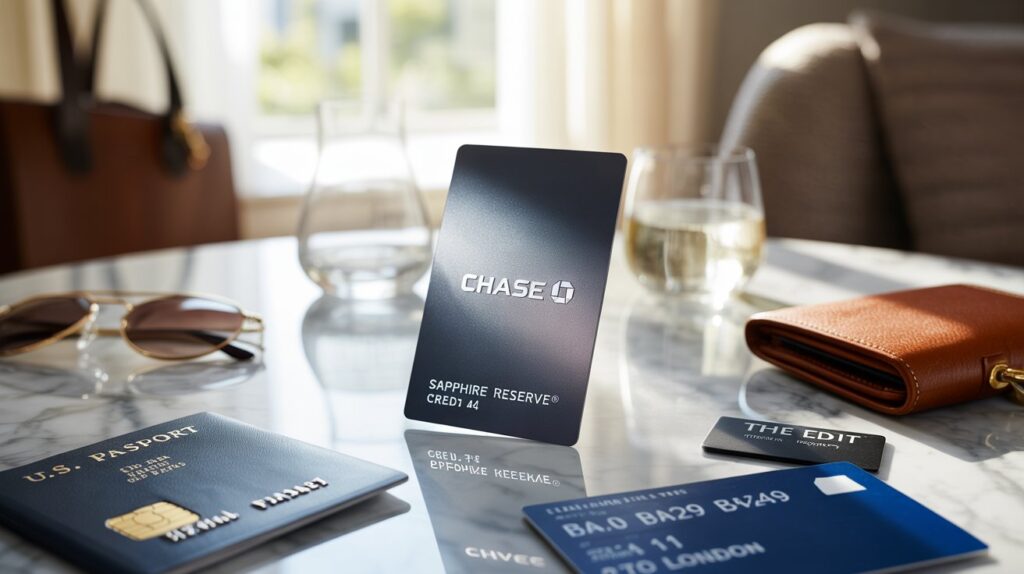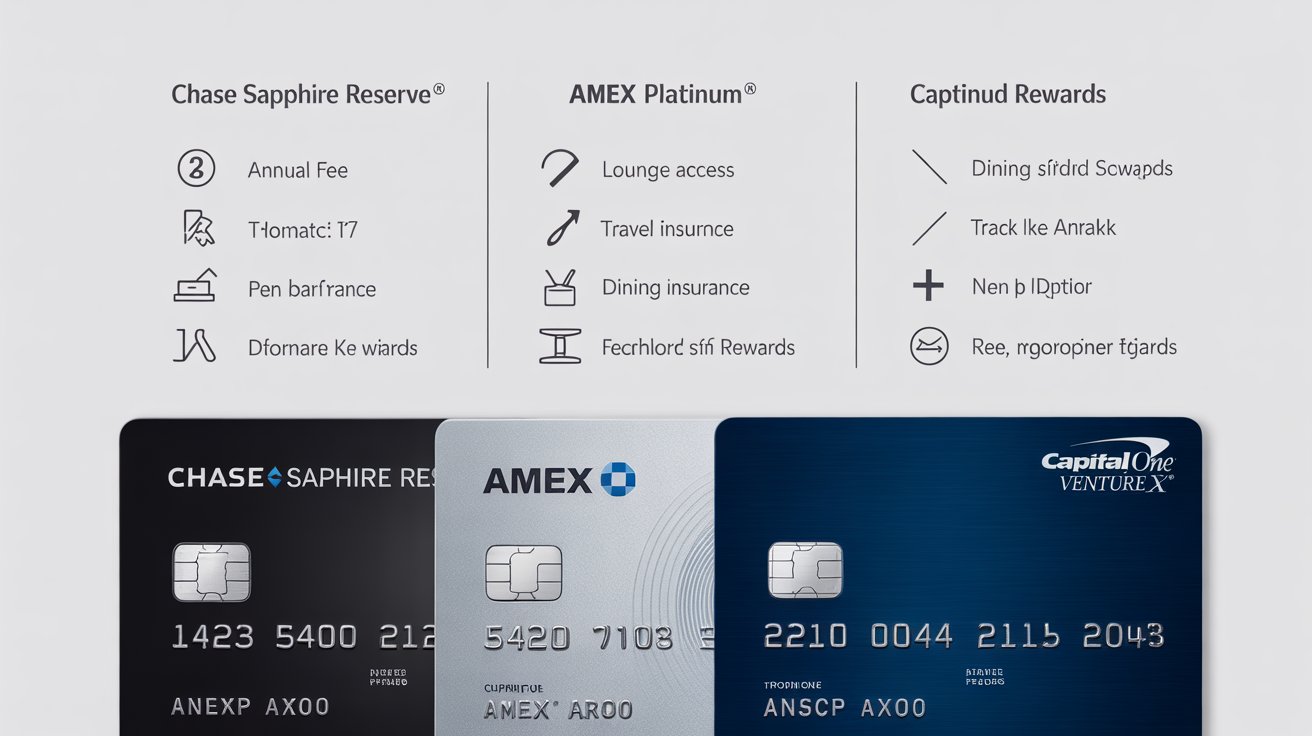
So the Chase Reserve just got a massive overhaul. We’re talking about like $2,700 in benefits, and there’s a catch, though — the annual fee jumped to $795. In the next couple of minutes, I’m going to go through what’s changing, what’s staying, and hopefully, this will help you decide whether the Chase Reserve is the right card for you.
So let’s get started on how you earn points because this is where things can get interesting, and some people might like this, and some people might hate this.
New Earning Structure and What’s Staying the Same in Chase Sapphire Reserve Benefits
So what’s new? eight times points on all Chase Travel bookings, including flights, hotels, cars, cruises, and activities.
You earn four times the points on flights and hotels booked directly with the airline or hotel. What’s staying the same? You earn three times the points on dining worldwide.
With this new earning structure, what’s gone is the old five times points on flights through Chase Travel and the 10 times points on hotels through Chase Travel.
Honestly, I think it should be gone because it simplifies things — just eight times points across the board on all Chase travel purchases.
Travel Categories Update in the Chase Sapphire Reserve Card
However, there’s a disappointing change — well, it depends on who you ask. They’re discontinuing the three times points on all travel purchases, and this is pretty big because the three times points on travel were a broad category.
You could use it on Uber, parking tickets, parking passes, or trains and stuff like that.
So instead of the three times points on the broad travel category, they replaced it with the four times points on flights and hotels booked directly.
If you’re the type of person who took advantage of the three times points broad travel category, that’s going to be gone — you’ll only earn one time’s points. So that’s a downgrade.
But if you like to book flights directly with the airline and hotels, then instead of earning three times points, you’ll now earn four times points. So that is an upgrade. That’s the trade-off. Some people might like the trade-off, some people might not.
Core Travel Perks: Chase Sapphire Reserve Travel Credit & Insurance
So now let’s talk about some of the travel benefits. The $300 annual travel credit — well, that’s staying the same, thank goodness.
Super flexible. It’s one of the best perks and benefits of the Chase Sapphire Reserve — this $300 travel credit can be used on a broad category of travel and in any increment.
I’m super happy that this $300 travel credit is staying because it’s one of the easiest travel credits to use.
High-End Hotel Benefits & The EDIT Credit in the Chase Sapphire Reserve Card

What’s new is that there’s a new $500 Edit Hotel Credit. This is split into two $250 credits — January through June, and July through December.
But here’s the catch: you must book through Chase Travel’s Edit Collection, which is a collection of luxury high-end hotels. There’s a two-night minimum. Prepaid bookings only.
The hotels in the city tend to be pretty high-end, so $250 will not cover two consecutive nights.
I stayed at the Fifth Avenue Hotel, which is part of the Edition in New York, and I was hosted by Chase — it was a great stay.
When you book through the Edit, you get a $100 property credit, complimentary breakfast, room upgrades, early check-in, and late checkout if available.
So you get a decent amount of additional perks when you book through the Edit.
If you’re already booking luxury hotel stays twice a year, then this credit’s going to be super easy for you to use.
Elite Status and Concierge Services in Chase Sapphire Reserve Benefits
What’s also new is that cardholders will get IHG One Rewards Platinum Status through 2027.
That’ll get you some additional perks and benefits when you stay at IHG hotels — like early check-in, late checkout, room upgrades (based on availability), welcome amenities, and so on.
There’s access to the Reserve Travel Designers — essentially a concierge to help you plan your trip, which they value at $300 per trip.
I’m interested to see what this is like. Hopefully, it’s not one of those concierge services where, like, if I want to go to Seoul, they send me a templated itinerary for Seoul.
Hopefully, they take down what my preferences are, and what I like, and build an itinerary specifically for me.
TSA, Airport Perks, and Chase Sapphire Reserve Lounge Access
and then TSA PreCheck and Global Entry — $120 credit every four years — stays the same.
airport lounge access — so Sapphire Lounge access with two additional guests, and Priority Pass stay the same.
All the travel protections like trip delay insurance, baggage delay insurance, primary car rental insurance, no foreign transaction fees, etc., stay exactly the same.
Dining, Lifestyle, and Entertainment Credits in the Chase Sapphire Reserve Card
So Chase went kind of crazy on these lifestyle benefits, and this is probably the biggest shift in the card.
starting with the annual credits — a $300 dining credit, which is split biannually: $150 for January through June, and then July to December is another $150.
These are for Sapphire Reserve exclusive restaurants only.
Looking at the Chase Sapphire Reserve exclusive tables, it’s mostly major cities and pretty high-end restaurants.
What you do is just use your Chase Sapphire Reserve card at those restaurants, and it’ll automatically trigger that credit — no activation required — which makes it pretty simple to use.
But you just have to make sure that you dine at one of those restaurants.
StubHub, Apple, and Peloton Benefits with Chase Sapphire Reserve
There’s also a new $300 StubHub credit — also biannual, so $150 for January through June and another $150 for July to December.
You’ll also get Apple TV Plus and Apple Music complimentary, which is valued at around $250.
All you need to do is activate this on the Chase website.
There’s a $120 Peloton credit — $10 a month for their subscription services, where you subscribe to their workouts online.
and the things that are staying the same — $120 Lyft credit (broken down into $10 per month) is still staying the same.
$300 DoorDash value — broken into $25 per month — and complimentary DashPass are also staying the same.
Are the Chase Sapphire Reserve Benefits Worth It?
So here’s my honest take on this lifestyle stuff.
- It’s a lot of credits, but they’re all very specific.
- You need to use StubHub, DoorDash, eat at these fancy restaurants, and have a Peloton to get value out of these credits.
- It isn’t cash — it’s essentially store credit at places Chase picked, and Chase is trying to mould you to fit and use these services.
- You’re essentially prepaying for these credits ahead of time by paying the annual fee.
Are these lifestyle credits worth it? Well, it depends on how they align with your lifestyle.
Premium Spend Threshold Benefits: What Big Spenders Unlock
for those high spenders out there — if you spend $75,000 per year on this card or more, you unlock even more stuff.
You get IHG Diamond Status (which is the highest IHG tier), Southwest A-List status, and a $500 Southwest credit through Chase Travel.
You also get a $250 credit for Chase’s The Shop, which is essentially where you can buy stuff that Chase curated — from big brands like Dyson and Samsonite and so on.
So that’s additional perks and benefits if you’re a high spender and able to spend $75,000 or more per year on the card.
Chase Sapphire Reserve Points Redemption Options Explained
So, as for points redemption, this is where things can get a little complicated with the Chase Sapphire Reserve.
You have three options to redeem your points for travel.
- Number one is cashback at 1 cent per point.
- Travel portals are at 1.5 cents per point.
- Transferring points can have varying valuations depending on where you transfer your points and how you redeem them.
Number one and three are staying the same, so cashback and transferring points are staying the same.
But the travel portal — Chase Travel — is changing.
With the new Chase Sapphire Reserve, the flat 1.5 cents per point through Chase Travel is ending.
Instead, they’re introducing a thing called Points Boost.
With Points Boost, you get up to 2 cents per point on select bookings and 1 cent per point on everything else.
Those select bookings will be determined by Chase, and you won’t know what’s points are boosted until you go into Chase Travel and run a search.
Redeeming at 2 cents per point sounds great, but the problem is — Points Boost seems to be limited to flights and hotels that are pretty premium.
So think business class or luxury hotels.
If you’re the type of person who likes premium cabins, business/first class, and luxury hotels, then you’ll have more opportunities to get those Points Boosts and redeem your points at 2 cents per point.
Existing cardholders and new cardholders will get the option for Points Boost on June 23, 2025.
All existing cardholders who had the Chase Sapphire Reserve before June 23 and earned points before October 26, 2025, will still be able to redeem those points for 1.5 cents per point through Chase Travel until October 26, 2027.
So you get to enjoy the best of both worlds and can redeem your points for whichever gives you higher value.
Chase Sapphire Reserve Annual Fee and Final Verdict
With all these new benefits and changes, the new annual fee will be $795. But some people will still be paying the $550.
Existing cardholders who have the Chase Sapphire Reserve before June 23 will get all the new credit card benefits on October 26, 2025.
Your annual fee will increase to $795 at your next renewal after October 26, 2025.
New applicants for the Chase Reserve on or after June 23 will get all the new perks and benefits right away on June 23 and immediately pay the $795 annual fee.
Final Thoughts: Chase Sapphire Reserve vs Amex Platinum vs Capital One Venture X

So here’s the thing — the annual fee increased to $795, which is not fun.
Whenever there’s a price or annual fee increase on a credit card, that’s never great.
However, if you look at other premium credit cards, the annual fee keeps increasing, but people continue to pay for it.
Essentially, what’s happening is you’re prepaying your annual fee for the entire year and getting these perks and benefits.
Credit card issuers hope for what’s called “breakage,” which means you forget about these perks and don’t use them.
However, if you’re diligent and use the perks and value them — and if they fit your lifestyle — then all the new credits might be valuable to you, and you can easily come out ahead.
For example — with the $795 annual fee — if you use the $300 travel credit (which is pretty easy to use), that cuts your effective annual fee to $495.
Then, if you use the $500 credit for the stays with Edit Hotels, just using those two benefits means you effectively break even.
And then you also get all the perks and benefits on top of that.
So it depends on how you travel, live your lifestyle, and how these perks and benefits fit into the way you live and spend your money.
Overall, in my opinion, the old Chase Sapphire Reserve was a great all-around travel credit card.
This new version is more of a luxury lifestyle credit card that happens to have travel benefits.
I think that’s the big difference now.
1 thought on “Chase Sapphire Reserve Just Got a $2,700 Upgrade, But Is It Worth the $795 Fee?”